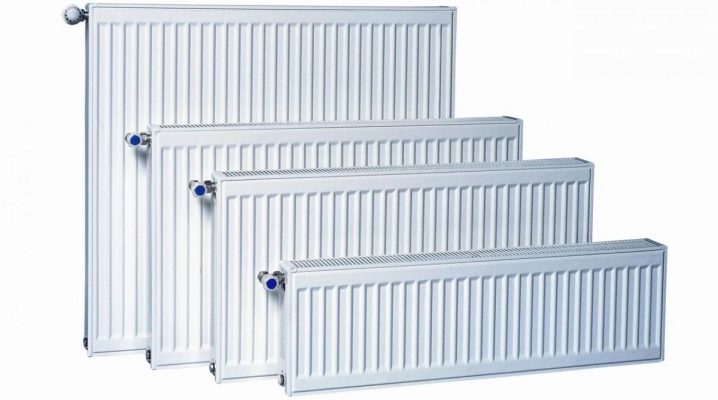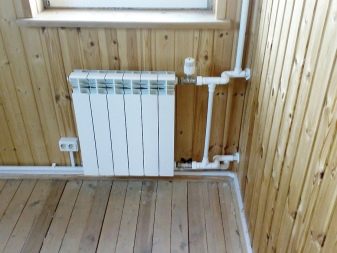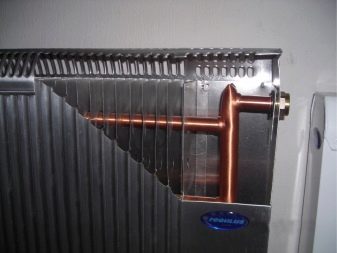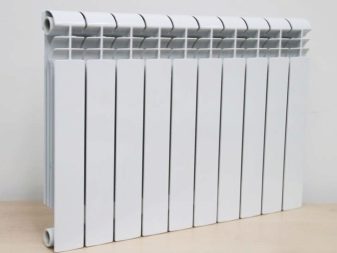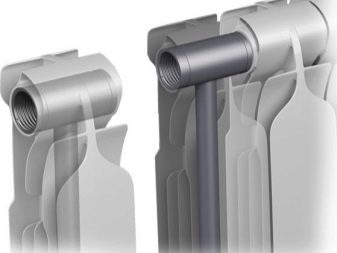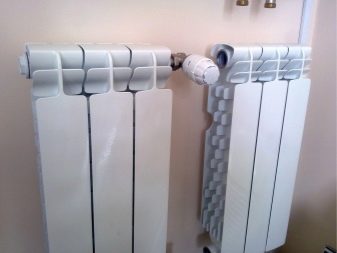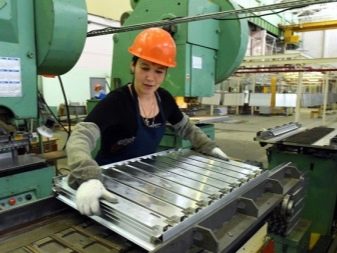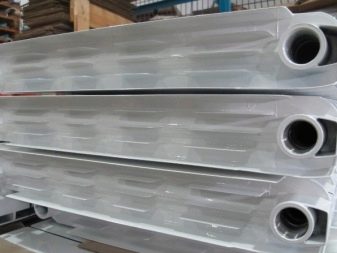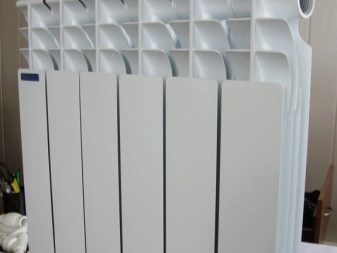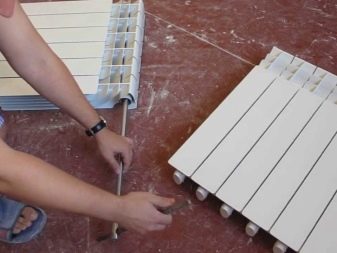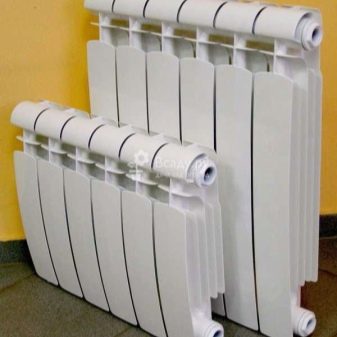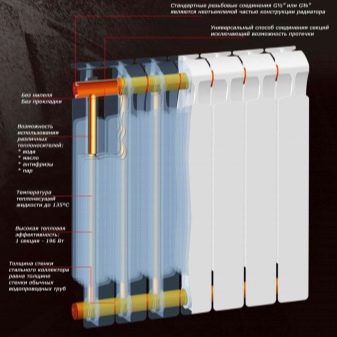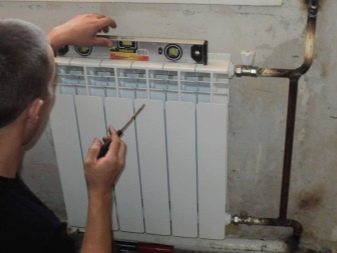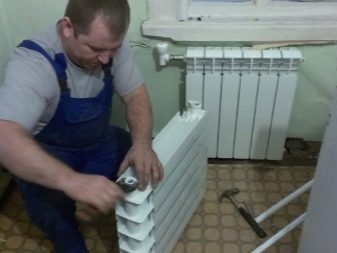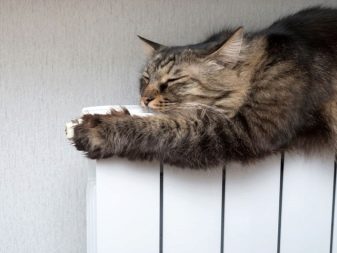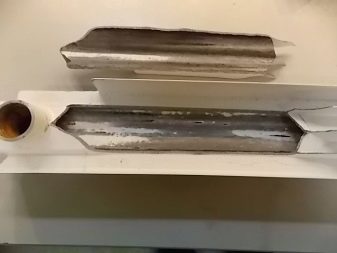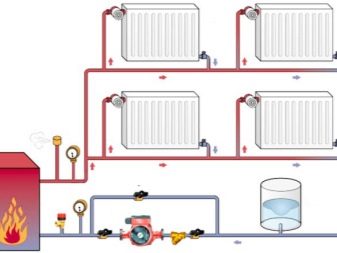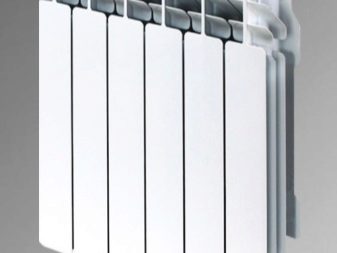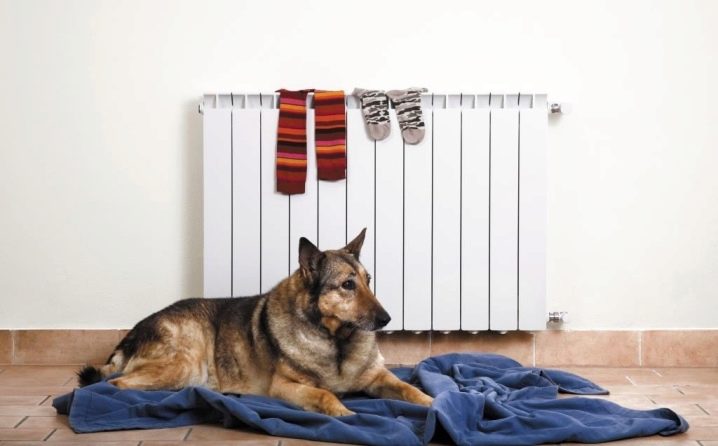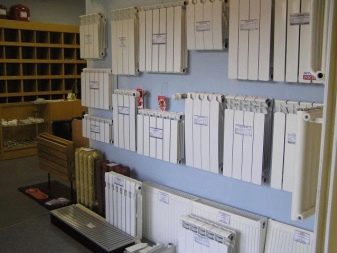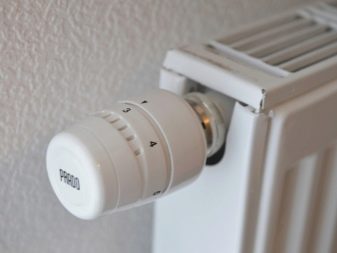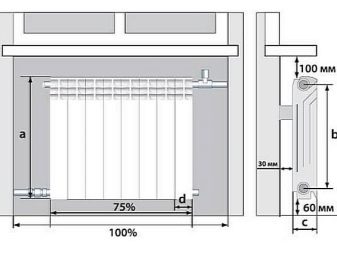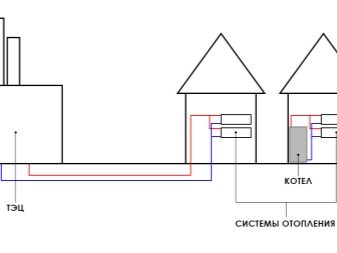Which radiator is better: bimetallic or aluminum?
When buying a new house or apartment, one of the issues that will have to be addressed is the design of the heating system. A modern radiator for heating is a convective-radiation heating device, which is often used to heat a private dwelling or apartment in high-rise buildings. Today, many people refuse heavy and bulky cast iron batteries and prefer bimetallic or aluminum versions.
Special features
Today, stores offer a huge variety of products. A person who has never worked on their own repairs, it is difficult to determine the purchase of such an important heating device as a radiator.When choosing it, be sure to take into account its power, design features, as well as ease of operation and installation. Battery operating conditions assume such technical characteristics as the operating pressure of the heating system and the purity of the heat carrier. Radiators consist of cavities in which liquid substances circulate in a hot state. Usually water is used as a liquid.
People used to use cast iron or steel batteries., having their pros and cons, but over time they were supplanted by bimetallic and aluminum structures. The latter turned out to be so unique and possessing important advantages over cast-iron and steel heating devices that they very quickly gained popularity around the world. Aluminum devices are made of aluminum alloy, and bimetallic - consist of two main parts, such as steel inner base and outer aluminum body.
Outwardly, both designs are practically the same.
Aluminum models appeared in the 80s of the last millennium. Thanks to the material from which they are made,This type of radiator has a small weight and high heat transfer, which is carried out by radiation, as well as by convection. In the Russian market, radiators are the most common, consisting of heating sections, which are interconnected by nipples. Bimetallic radiators are produced using a unique technology, where a combination of two materials is used (hence the “bi” prefix), are the best choice for heating apartment buildings, cottages and country houses. The design of this type is a steel tube passing through aluminum sections, which provide an incredibly high thermal conductivity.
Differences
Aluminum radiators are stylish designs from several sections.
They are manufactured by two methods such as:
- extrusion method, which gives cheap and light devices are not the best quality;
- in the case of the casting method, durable and high-quality radiators are obtained, but more expensive in price. Silicon is added to aluminum alloy to increase strength.
Anodized aluminum devices are made of high quality material, and to increase resistance to corrosion is subjected to anodic oxidation. Aluminum radiators withstand a working pressure of up to 16 atmospheres, anodized models - up to 69–70 atmospheres. Bimetallic structures, as mentioned above, are made of two materials. The housing with aluminum alloy ribs has inside the core of the pipes, where the coolant flows. Pipes are made of steel, due to which such radiators can withstand very strong pressure, reaching up to 60 atmospheres, which allows them to be used in high-rise buildings.
Aluminum radiators have the following positive characteristics:
- the ability to select different models in color, type, size;
- ease of installation and transportation;
- compactness - the width is usually less than 10 cm, which is why the device will not take up much space in the room;
- high working pressure - this indicator is very important for the operation of the heater;
- you can install several sections, which will increase the power, therefore, to provide with heat a large area of the room;
- some models are equipped with a thermostat with which you can adjust the temperature of heating;
- relatively low price;
- heat dissipation allows you to maintain a comfortable level of temperature in the room.
Bimetallic instruments have the following advantages:
- reliability - this type of radiator can last for 20–30 years without interruption;
- corrosion resistance - the materials from which bimetallic batteries are made, practically do not react to an alkaline environment;
- quick response to the commands of the thermostat - with the help of a core installed in the radiator, the device heats up in a matter of seconds and also instantly cools down;
- easy installation;
- safety, durability and strength;
- high heat emission;
- small size and weight;
- wide range of use.
The installation process of aluminum and bimetallic heaters has approximately the same principle of installationHowever, a detailed and accurate comparison indicates that the assembly of the heating system with aluminum radiators is simpler and more accessible for independent work. And also both heating options have almost the same appearance.If we compare the range of use, it is worth noting that devices from bimetal, due to their high working stability under atmospheric pressure, can be installed in all types of premises, unlike some models of aluminum structures. If we compare the difference in heat transfer, then aluminum devices are in the lead. One section of this type of radiator can provide 200 watts of heat. The return of heat in bimetallic batteries depends on a particular model, but almost always the figure will be lower than that of aluminum counterparts.
Aluminum is able to withstand boiling water up to +110 degrees, while bimetallic - up to +130 degrees. The price of bimetal radiators is significantly higher than their aluminum competitors, by almost 1/3. For this reason, many buyers prefer the latter. Among the drawbacks of aluminum radiators, it is worth noting their poor resistance to corrosion. Aluminum activity does not allow using the device under standard conditions of heat supply for a long time. As a result of some chemical processes in the heating system with the help of aluminum structures, it is possible to air it.Among the shortcomings of bimetallic devices are their higher price in comparison with aluminum radiators, as well as more complicated repairs in the event of a breakdown.
Which to choose?
All batteries differ from each other, so before buying you should pay attention to the conditions in which they will be used. This approach will allow for many years to effectively address the issue of creating a favorable microclimate in your own home. To select a radiator, you should pay attention to several important criteria.
- Type of heating system. There are two types of heating systems - centralized and autonomous. In a centralized water pressure is high, but not constant, since all batteries are connected to one pipe and turn on one after another. In the case of starting a centralized heating system, the pump is turned on abruptly, which is fraught with the formation of a water hammer, which can lead to damage to a certain material. The coolant in this system is hard water and in the absence of heating the material may corrode.
Autonomous heating system, which is used in private homes, consists of only two pipes,where the coolant moves in a circle. Water at the same time differs in small rigidity, therefore, batteries do not require high durability. Therefore, for an autonomous system, aluminum radiators are recommended for installation, and bimetallic radiators are recommended for a centralized system. Of course, the latter can be applied in a private house, but because of their high cost, it is better to choose cheaper options.
- Durability. Bimetallic radiators can last up to 30 years, and aluminum - up to 20 years. As for reliability, the undisputed leader is bimetal devices, since this type can withstand strong pressure and is more resistant to corrosion.
- Thermal power. The required power must be taken into account based on the type and size of the room, as well as its characteristics: wall material, number of windows, type of windows (plastic or wooden). In one section in aluminum batteries accounts for 200 watts, in bimetallic - 180 watts. The first step is to calculate the heat loss of the room. For this, the volume of the building in cubic meters is multiplied by 41 W - this is the amount of heat required to heat 1 cubic meter of space.Thus, knowing the cost of heat, you can decide on the necessary power to maintain a comfortable temperature.
- Operating pressure. The pressure in the radiator should not be less than the pressure of the total heating system.
- When choosing a radiator, you should also pay attention to the width of the window opening so that the device fits perfectly into the interior.
- The presence of thermostats will help to normalize the temperature and create a comfortable environment for living.
Tips and tricks
To make the right choice in favor of aluminum or bimetallic radiators, It should take into account the recommendations of experts.
- If it is wrong to calculate the required radiator power, in the future this may lead to the creation of an uncomfortable microclimate in the room. Overheating of the room leads to stuffiness, to get rid of which you have to constantly open windows or doors. And also if the surface of the heater gets too hot, then this leads to a decrease in the humidity level of the room, burning oxygen, as a result of which the state of health worsens. Even the furniture, which can deteriorate with strong fluctuations in temperature, suffers from the wrong power chosen.
- Batteries are installed so that at its edges always left from 20 cm of free space. This distance is necessary to ensure normal air convection.
- The installed battery in the niche should have 20% more than the estimated power.
- If a room has two or three windows, then it is advisable to install a separate radiator for each of them, rather than choose a long model.
- When buying a heating system, you should pay attention to its technical passport. It should include such characteristics as the permissible water temperature in the heater, limiting pressure and others.
- The correct number of sections for a heating radiator is easily calculated using online costing. For this you need to have such information as: the lowest possible temperature outside the window, the size of the room, the power of one section of the battery.
- Before proceeding with the installation of the battery yourself, it is necessary to make a plan for placing not only the appliance itself, but also the entire heating system. Unlike cast iron batteries, wall and aluminum aluminum and bimetallic radiators are installed using special brackets.
- Both types of radiators can be attached using special racks on the floor, if the walls of the room are made, for example, of plasterboard.
- Polyethylene film should not be removed from the battery until it is fully installed, so as not to damage the surface.
- After installation, it is important to ensure the tightness of threaded connections. Fum-tape is used for sealing.
- Experts say that the number of defects in the choice of heating radiators is 0.5–0.9%. The main thing is to choose a company that has proven itself in the Russian market. Most of the brands under which they produce aluminum and bimetallic batteries are produced mainly in China. The number one brand in the world in the production of radiators is the Global company, the only enterprise that did not transfer its production to China. Among the companies specializing in the production of radiators, it is also possible to mention the company Rommer, which manufactures heating batteries suitable for Russian conditions.
How to choose a radiator, see the following video.
